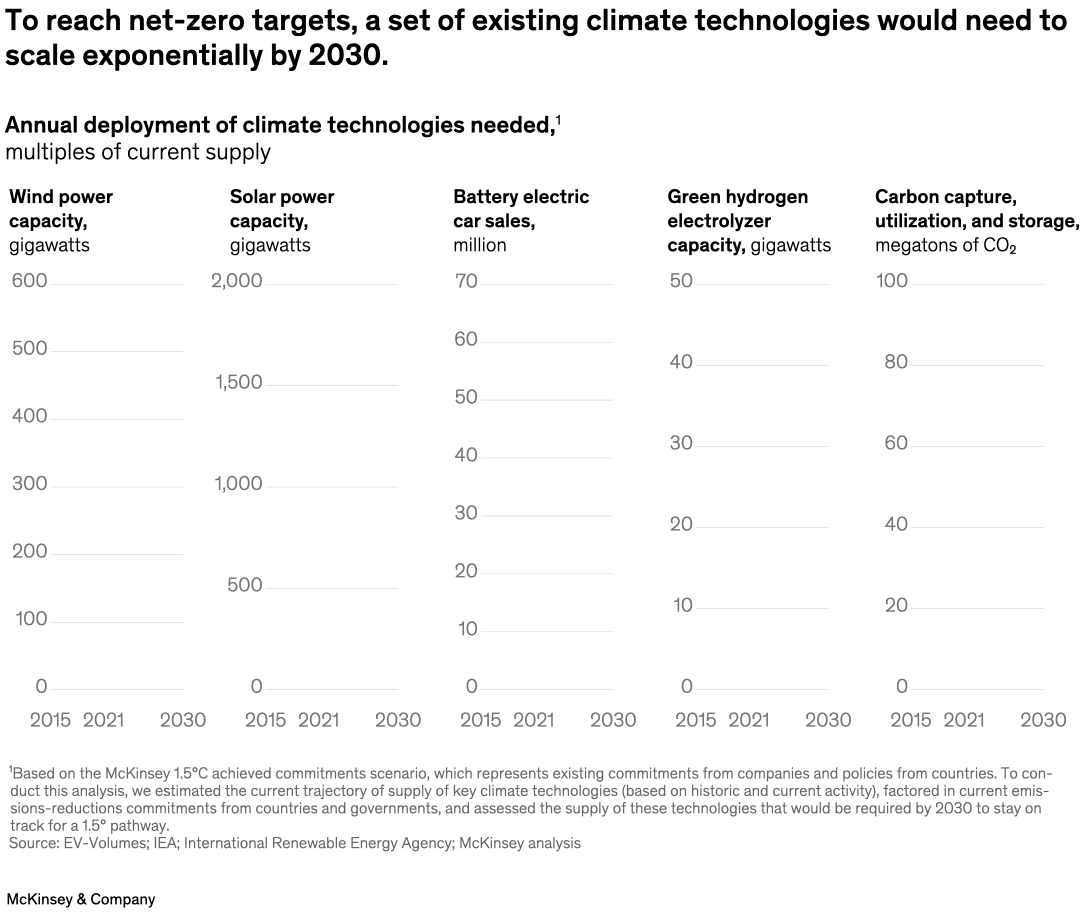To hit net-zero targets and fend off the worst effects of climate change, a set of key technologies needs to scale exponentially, say senior partner Tomas Nauclér and colleagues. Solar power, for example, would need to scale by a factor of 14 times by 2030. For carbon capture, utilization, and storage, a technology that is still in the earlier stages of adoption, the scaling factor is 100 times.

Image description:
A series of vertical line graphs represent the annual deployment requirements of 5 climate technologies needed to reach net-zero targets. From left to right, the technologies depicted are wind power capacity; solar-power capacity; battery electric car sales; green-hydrogen electrolyzer capacity; and carbon capture, utilization, and storage capacity. The line graphs use actual data for 2015 to 2021 and extend to show where each technology needs to be by 2030, based on multiples of the current supply. The line graphs show that all of the technologies are well below their targets as of 2021, which is the last actual data set analyzed, and further show that by 2030, wind-power capacity needs to increase six fold, solar-power capacity fourteen fold, battery electric car sales fourteen fold, green-hydrogen electrolyzer capacity by 200-fold, and carbon capture utilization and storage by 100-fold.
Footnote: The data are based on the McKinsey 1.5°C achieved commitments scenario, which represents existing commitments from companies and policies from countries.
Source: EV-Volumes; IEA; International Renewable Energy Agency; McKinsey analysis
End of image description.
To read the article, see “Scaling green businesses: Next moves for leaders,” March 10, 2023.